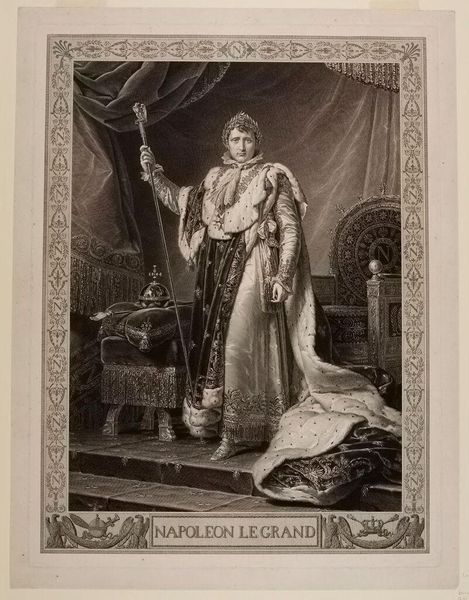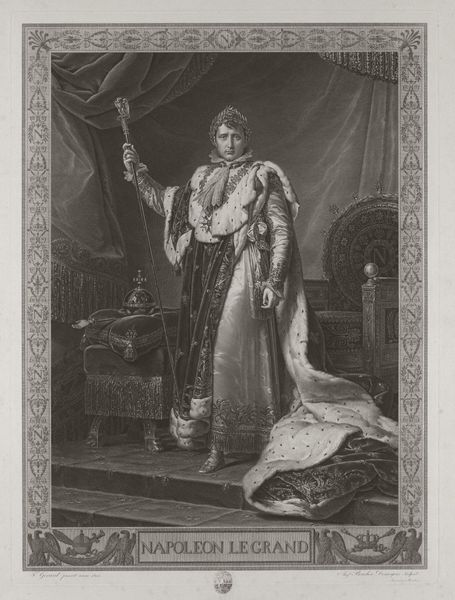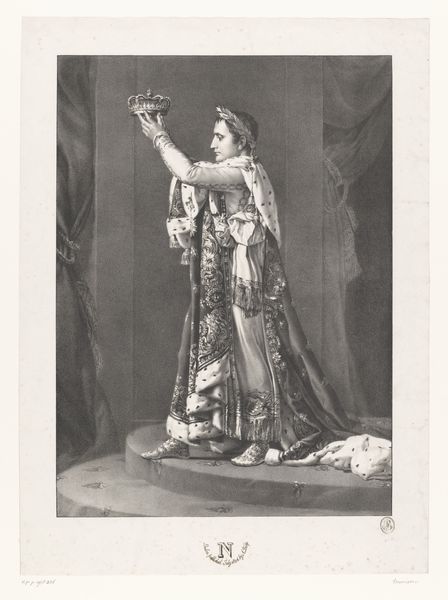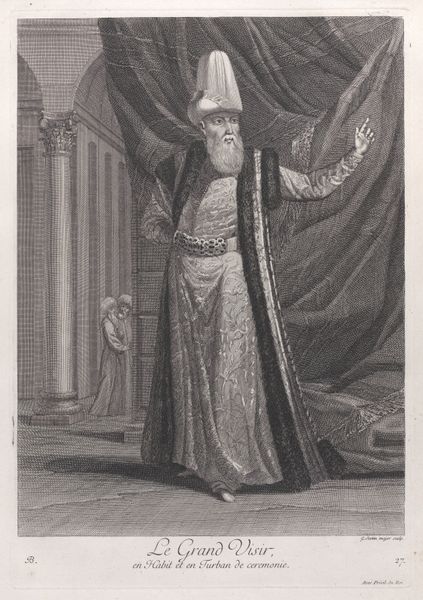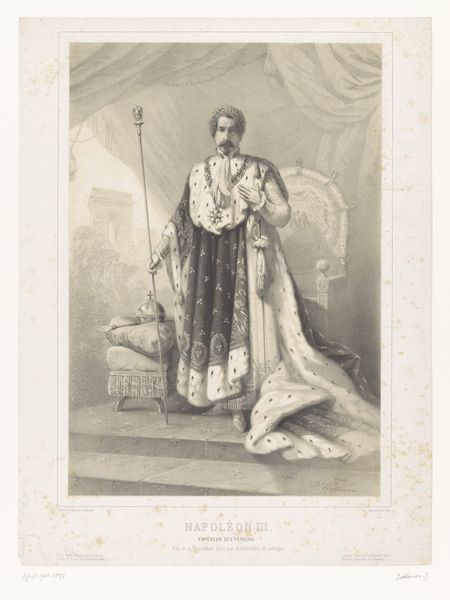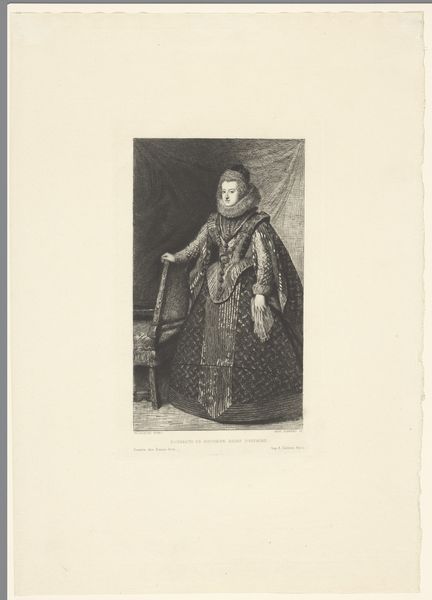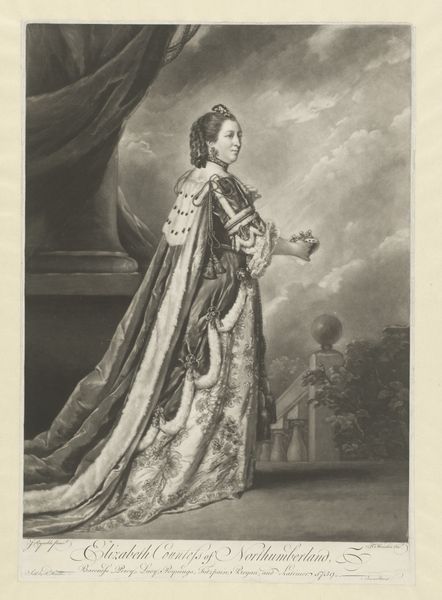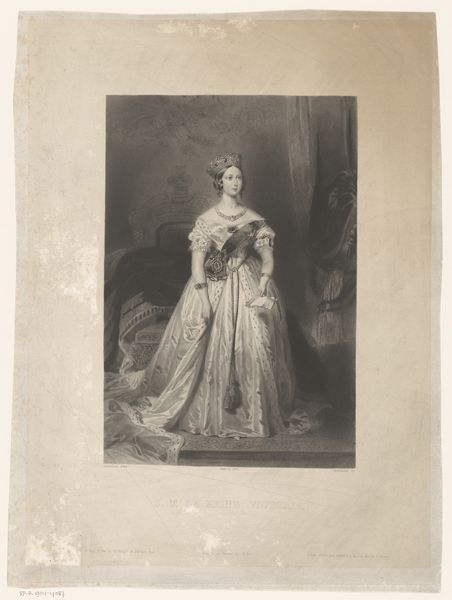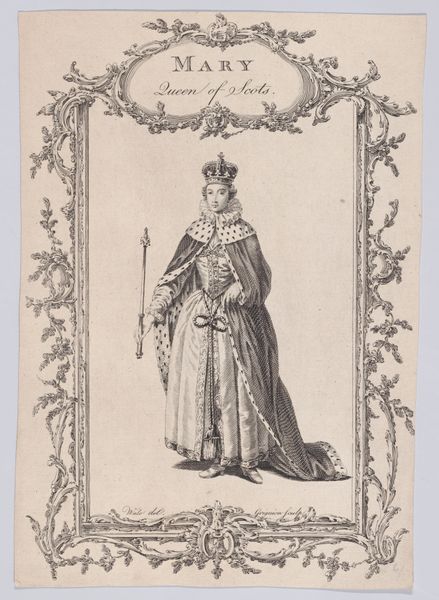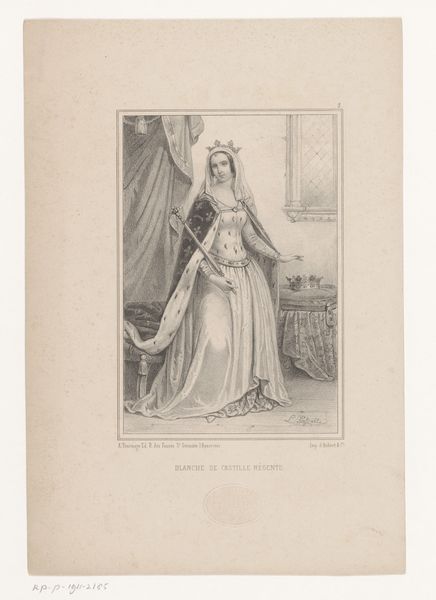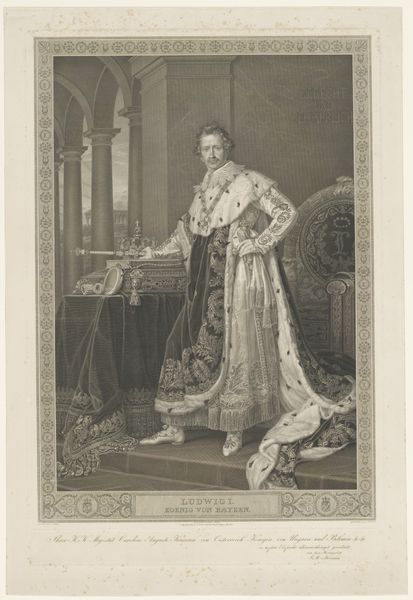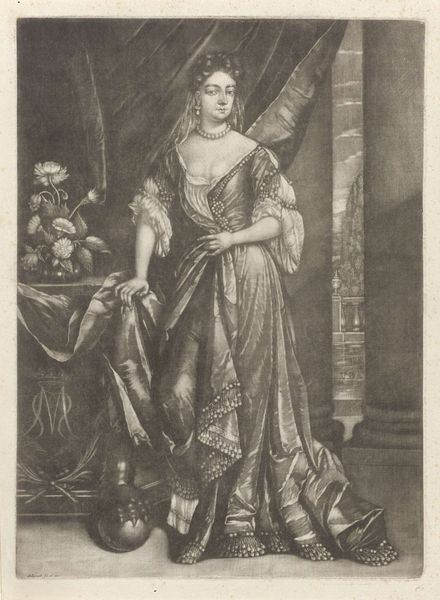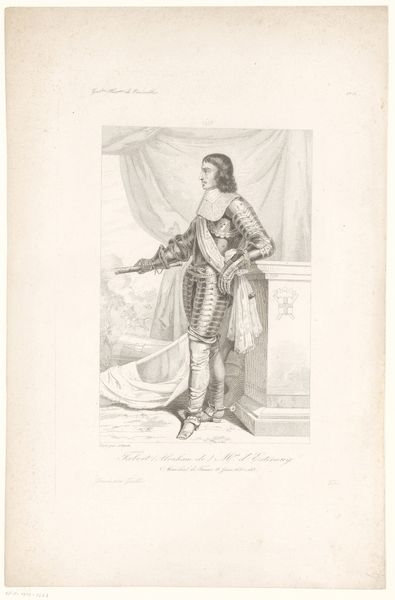
drawing, print, paper, engraving
#
portrait
#
drawing
#
neoclacissism
# print
#
sculpture
#
charcoal drawing
#
paper
#
history-painting
#
academic-art
#
engraving
Dimensions: 568 × 415 mm (image); 765 × 555 mm (sheet)
Copyright: Public Domain
Editor: This is "Napoleon the Great," an 1808 engraving by Auguste Gaspard Louis Boucher Desnoyers. It’s imposing, certainly designed to project power. The symbols are everywhere - the crown, the scepter, ermine robes... What are the key messages encoded in all of this imagery? Curator: This print is fascinating because it's an engraving, a reproduction of a portrait by Ingres, effectively creating an icon from an icon. Consider how Napoleon deliberately associates himself with prior empires using symbols - the bee being the most telling here, an emblem used by the Merovingian kings, predating even the fleur-de-lis. Editor: The bee? I hadn’t noticed that. So, it’s not just about current power, but a manufactured lineage? Curator: Precisely. It's about forging a sense of timeless authority and even destiny. What feeling does the bee symbol evoke for you? Is it industrial, divine or simply regal? Note also how the image carefully constructs the mise-en-scène, Napoleon looks toward the viewer to inspire admiration and fear. Editor: It’s interesting how they layered symbols upon symbols. It definitely feels… staged. The way everything is carefully arranged. Almost too perfect. Curator: The visual vocabulary also conveys the Neo-Classical aesthetic – which brings with it associations of reason and order, which, in turn, become tied to Napoleon himself. All of this works to portray him as the rightful heir, chosen not just by circumstance, but by history itself. What’s striking about this icon for you? Editor: The layers of symbolism make it feel more like a carefully constructed myth than a straightforward portrait. Thank you for making that all so clear. Curator: And in deconstructing those layers, we reveal how imagery operates to shape perception and understanding, both then and now. It shows the ongoing construction of myth through symbols.
Comments
No comments
Be the first to comment and join the conversation on the ultimate creative platform.
